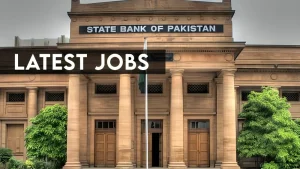Beef is a staple in the Pakistani diet, widely consumed in both urban and rural households. Whether it’s part of a daily meal or served during festive occasions, the demand for beef remains consistently high throughout the year. However, in recent months, prices have shown fluctuations due to various economic, seasonal, and logistical factors.
As of June 2025, beef prices in Pakistan differ significantly from city to city. While government departments issue official price lists, actual market rates often reflect local supply and demand conditions. Below is an overview of current beef prices in major cities, followed by insights into what’s driving these changes.
Read More: Tax Cuts on Essential Food Items to Tackle Inflation and Improve Access
Latest Beef Prices by City (June 2025)
| City | Bone-in Beef (Rs./kg) | Boneless Beef (Rs./kg) |
|---|---|---|
| Lahore | 1,100 – 1,200 | 1,300 – 1,400 |
| Karachi | 1,000 – 1,100 | 1,100 – 1,200 |
| Islamabad | 1,300 – 1,450 | 1,400 – 1,600 |
| Rawalpindi | 1,250 – 1,400 | 1,450 – 1,500 |
| Multan | 1,350 – 1,400 | 1,450 – 1,500 |
| Gujranwala | 1,200 – 1,300 | 1,400 – 1,450 |
| Sialkot | 1,200 – 1,250 | 1,300 – 1,350 |
| Faisalabad | 800 – 900 | 1,000 – 1,100 |
| Peshawar | 1,000 – 1,050 | 1,200 – 1,250 |
| Quetta | 1,000 – 1,200 | 1,200 – 1,300 |
Note: Prices are based on market observations and publicly available data. Rates may vary slightly depending on vendor and quality.
Read More: Retrospective Agri Tax Implementation from January 1, 2025
Factors Influencing Beef Prices
Several key factors are currently affecting the beef market in Pakistan:
1. Market Demand: Peak consumption periods, such as Eid-ul-Adha, Ramadan, and wedding seasons, typically see increased prices due to higher demand.
2. Supply Chain Issues: Livestock availability, transportation challenges, and rising fuel prices have contributed to inconsistent supply in some regions.
3. Government Regulation: Provincial and city administrations regularly issue official meat price lists, but enforcement remains a challenge, especially in larger metropolitan areas.
4. Feed and Maintenance Costs: Rising feed prices and maintenance expenses for livestock are directly impacting wholesale and retail beef prices.
How to Buy Smart in Today’s Market
- Compare Prices: Visit multiple meat vendors before making a purchase to get the best deal.
- Check for Freshness: Look for bright red color and a clean texture. Avoid discolored or overly soft meat.
- Buy Early: Early morning purchases tend to offer fresher meat at slightly better prices.
- Ask for Official Rates: Some cities have price lists displayed in markets. Use them to negotiate fair pricing.
Read More: Food Asia Expo in Karachi Sees Over $10 Million in Business Deals Signed
Final Thoughts
Keeping track of current beef prices helps consumers make informed choices and avoid overpaying. While rates continue to shift based on economic and seasonal factors, staying aware of your local market conditions can ensure better quality and value. Whether you’re shopping for a family meal or stocking up for a special occasion, understanding the market is essential.Keep visiting: Bloom Pakistan
This content is based on independently gathered information and does not reproduce or copy any government or third-party material. All data is compiled for public informational purposes.









